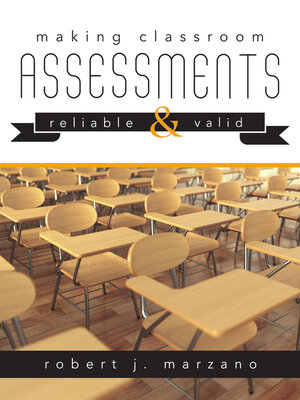Making Classroom Assessments Reliable and Valid
ebook ∣ How to Assess Student Learning
By Robert J. Marzano

Sign up to save your library
With an OverDrive account, you can save your favorite libraries for at-a-glance information about availability. Find out more about OverDrive accounts.
Find this title in Libby, the library reading app by OverDrive.



Search for a digital library with this title
Title found at these libraries:
| Library Name | Distance |
|---|---|
| Loading... |
Making Classroom Assessments Reliable and Valid by Robert J. Marzano will convince you that classroom assessments should become the primary method for formally measuring student learning over other types of assessment in education. Read about the key advantages of classroom assessments over interim, end-of-course, and state assessments in how to assess student learning and measure growth over time.
Marzano also addresses the validity and reliability of classroom assessments and how to improve those metrics before bringing them to their rightful place in K-12 assessments. This book outlines how to revamp validity and reliability to match technical advances made in classroom assessment, instead of matching large-scale assessment's traditional standards.
Using this book, teachers, schools, and districts can design classroom assessments that are equally if not more reliable and valid than traditional large-scale assessments.
How this book will convince you to use classroom assessments:
Contents:
Introduction: The Role of Classroom Assessment
Chapter 1: Discussing the Classroom Assessment Paradigm for Validity
Chapter 2: Designing and Scoring Parallel Assessments
Chapter 3: Discussing the Classroom Assessment Paradigm for Reliability
Chapter 4: Measuring Growth for Groups of Students
Chapter 5: Transforming the System Using the New Classroom Assessment Paradigms
Appendix







